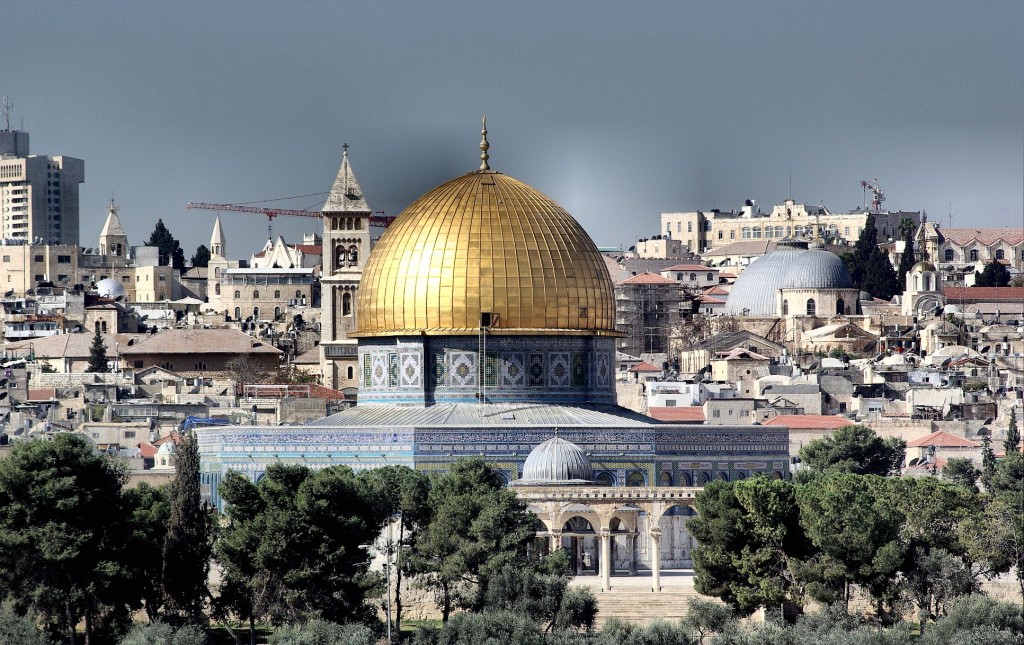Two-state solution loses its champion
By Hugh Naylor, Apr 13, 2012
…
The spines of the books that bear Sari Nusseibeh’s name are testimony to the cause he once championed.
There is Palestine: A State is Born, published in 1990. A year later, it was No Trumpets, No Drums: A Two-State Solution of the Israeli-Palestinian Conflict.
To the dismay of those who continue to support the two-state solution, Mr Nusseibeh now believes the convictions he espoused in the pages of these books are as faded and musty as the volumes.
He says “two states for two peoples” – the idea that stirred his imagination, aroused his hopes and became a clarion call for Palestinians and their supporters worldwide – has become a casualty of time, the Jewish settlement enterprise and the rise of Islamist groups such as Hamas.
Mr Nusseibeh, the president of the Al Quds University in Jerusalem, now speaks of a single Palestinian-Israeli federation between the Jordan River and the Mediterranean.
The Oxford and Harvard-educated professor of Islamic philosophy takes no relish in breaking faith with the two-state solution.
Neither does Mr Nusseibeh promise any light at the end of the tunnel for those who share his epiphany. For the moment, the prospects for Palestinians and Israelis remain grimly predictable.
“Life could go on deteriorating for both sides, and by deteriorating I mean not necessarily going towards a major clash,” he said. “Even without one, at the end of the day life can be quite miserable for both sides for some time to come.”
Mr Nusseibeh’s support for the two-state solution, with Jerusalem as the Palestinian capital, was extremely influential.
His 1988 manifesto that advocated the right of Palestinians to self-determination played a major role in channelling the anger and violence that accompanied the first intifada.
Five years later, with a more restive Palestinian population, Yasser Arafat and the Israeli prime minister Yitzhak Rabin signed the Oslo Accords.
Today, the idea he advocated seems almost quaint given Israeli encroachment in the West Bank and the brutality of its military occupation.
He saw it coming. In his 2007 autobiography, Once Upon A Country: A Palestinian Life, he bluntly warned the two-state concept was veering towards a “gruesome binational reality of apartheid”.
Mr Nusseibeh now doubts whether Jerusalem, where his roots go back centuries, could ever become a viable capital of a Palestinian state.
The land in the holy city that Palestinians have claimed as the site of their future capital has been overwhelmed by Jewish settlements, he said.
To even call that part of the city East Jerusalem is a misnomer, he said, because much of it has become an extension of the Jewish-dominated western neighbourhoods.
The Israelis are not entirely to blame for the Palestinians’ predicament, Mr Nusseibeh said. The failure of Palestinians to obtain their own state is also self-inflicted – the result of political failures by their leaders to deliver support for the two-state compromise.
Mr Nusseibeh’s descriptions of the main Palestinian political factions, Fatah and Hamas, and their respective capitals in Ramallah and Gaza City, are withering.
“What are they doing? Who are they? And why do they parade themselves around the way they do? They’ve lost their lustre.”
With the prevalence of religious hardliners the Gaza Strip, he said, might be on its way to becoming “another Saudi Arabia”, while politics in Ramallah and the West Bank show that, “we’re just as corrupt as they come in the Arab world”.
“It’s not such a great thing that we’ve done for ourselves, unfortunately,” Mr Nusseibeh concluded.
In his view, perhaps the only plausible path to peace is a federation for two peoples who have become inextricably “knotted up”.
He envisages Israeli Jews and Palestinians in the territories and Israel uniting under separate, semi-autonomous authorities. They would form what he described as a European Union-style federation, with freedom of movement and work for residents of the Jewish and Palestinian areas.
Under this political framework, Palestinians would, in effect, become equal to Jews.
“This is really what one should be looking at, even if it would come many years down the road,” Mr Nusseibeh said.
But some long-time political observers in the city regard his notion of a federation as impossible.
Daniel Seidemann, a practising lawyer in Jerusalem, doubts whether Israelis would tolerate living under the proposed federation, which would effectively end Israel as a Jewish state.
“I have never seen a compelling argument that details how anything other than two-state solution would work,” said Mr Seidemann, the founder of a non-profit association dedicated to an equitable, stable and sustainable Jerusalem.
Others are left wondering about the reasons behind his disavowal of the two-state solution.
Zakaria Al Qaq, a lecturer in security studies at Al Quds University, believes Mr Nusseibeh’s conversion was born out of despair.
“I think he has concluded this because there are literally no more options left for us,” Mr Al Qaq said. “No one – and I mean no one – is prepared to help save the Palestinians from this situation.”
But Mr Nusseibeh, 64, betrays no signs of pessimism.
Above all, he is an intellectual and a rationalist, with a strong distaste for stale ideas no longer rooted in real circumstances.
What is critical for him is that Israelis, for better or worse, ultimately hold the key to bringing an end to the conflict “because they are in control”.
“My understanding of this is that they should therefore decide the best end for both of us, and therefore lead us there,” Mr Nusseibeh said.
Amid the to-and-fro about the so-called peace process, one thing remains certain for Mr Nusseibeh: moving beyond the conventional two-state thinking he advocated all those years ago is a crucial first step.
“I believe in miracles, so nothing is dead forever,” he said. “But as far as probabilities go, the classical two-state solution is not probable.”
…
http://www.thenational.ae/news/world/middle-east/two-state-solution-loses-its-champion or http://bit.ly/IqunIE
Photograph of Jerusalem’s Dome of the Rock, by Berthold Werner, 10 November 2008. http://en.wikipedia.org/wiki/File:Jerusalem_Dome_of_the_rock_BW_3.JPG or http://bit.ly/HGOQdS

